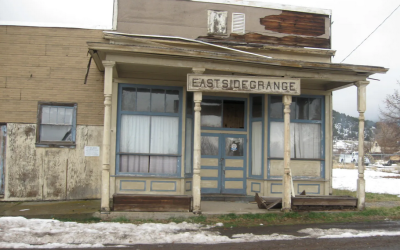The federal government has made misguided mortgage policies in recent years. The first, in 2015, was to raise the amount that CMHC mortgages required for a down payment. The second, in 2016, was to increase the stress test. The third, in 2017, was that the mortgage stress test would be based on rates roughly 2% higher than their potential contractual rate. The fourth, in 2019, was to create the First-Time Buyer’s program. The fifth came quite recently in the form of more rule-tightening by CMHC. By taking the steps that it did in the order that it did, the government has brought about bad results for the Canadian economy and public.
The prequel to this essay covered the first three of these changes. As that essay demonstrated in its conclusion, the need for the two percent stress test was gone by the spring of 2019. Interest rates were no longer set to rise. The ideal response would have been to reverse step three and to leave the stress test for mortgages at the Bank of Canada’s five-year standing rate—not that rate plus two percent as it had become. This stress test had kept many from entering the housing market. Nevertheless, the fourth mortgage policy change under the Liberal government was about to begin.
CHANGE FOUR: THE FIRST-TIME BUYER’S PROGRAM
Instead of getting out of the way, the government “solved” the problem it created by introducing another intrusive measure—one that made the federal government part owner of the homes Canadians would buy. The problem by which this happened was the First-Time Home Buyer Incentive, announced in conjunction with the March 2019 federal budget.
For first-time buyers, the government would offer five to ten per cent of the value of a newly constructed home, five per cent to buy an existing home or five per cent for a mobile home. The premise was that the borrower would have a lower down payment and the government would share in both the upside and the downside of a changing property value. After 25 years or when the property was sold, the homebuyer had to repay the incentive by the same percentage they had received.1
First-time home buyers with a household income of less than $120,000 annually could qualify, but the mortgage needed to be less than four times the household income. 2
The program would not take effect until the fall. This prompted prominent mortgage broker Ron Butler to tweet this response to the newly-announced program.
Hey, if this USSR loan you pay back homeowners program won’t be up and running till September……..
It could actually DELAY purchase decisions for 6 months
Sweet Jiminy Cricket on a Crutch Morneau may actually have found a way to SLOW the economy for 6 months.3
Stephen Punwasi of BetterDwelling.com, Canada’s largest independent housing news outlet,4 wrote, “Canadian real estate sales are already at Great Recession levels. The government may have just slowed it down even further, and faster. Quite the accomplishment.”
Punwasi was as ungracious as Butler and called the program “a predatory loan scheme that will do more harm than good” and said, “The Government of Canada is using taxpayer money to invest in real estate at near peak valuations.”5 Punwasi saw parallels with the timing and nature similar program delivered in the United States in 2008.
For example, if an institution dumps a large position, its position overhangs the market. The result is existing asset owners won’t have liquidity, and prices fall.
During the Great Recession, the US used policy to address a capital overhang in real estate. The First-Time Homebuyer Credit was billed as a way to help young homeowners buy into the market in 2008. The unspoken purpose was to reallocate homes from distressed owners to buyers that could afford to take a hit. Great news for distressed investors, but not so great for the buyers.
Dean Baker of the Center for Economic and Policy Research reviewed the effects of the program in 2018, ten years after its implementation and believed the government had no excuse for not recognizing what was going on. “Dangerous bubbles like the housing bubble don’t slide by under the radar,” Baker wrote. “If bubbles are big enough for their collapse to severely damage the economy, they are big enough to be seen.”
The vacancy rate had been rising along with prices, which was the sure sign of a bubble. Alan Greenspan noticed it towards the end of his time with the Fed in 2006. The Washington Post reported,
Greenspan puzzled over one piece of data a Fed employee showed him in his final weeks. A trade publication reported that subprime mortgages had ballooned to 20 percent of all loans, triple the level of a few years earlier.
“I looked at the numbers . . . and said, ‘Where did they get these numbers from?’ “ Greenspan recalled in a recent interview. He was skeptical that such loans had grown in a short period ‘to such gargantuan proportions.’6
What happened next was historic.
… When homeowners began defaulting on mortgages, their houses were foreclosed upon, putting more homes on the market. This put downward pressure on the prices of other homes. That made more people underwater in their mortgages, increasing the default rate further and creating a downward spiral.7
The pain was only made worse by a First-Time Homebuyer’s Credit that influenced people to buy into the market at the worst possible time, leaving them captive on a sinking ship. What Baker wrote about the current situation in the United States as of his 2018 paper is prophetic for the inflated housing markets in Vancouver and Toronto.
In particular, the bottom third of the housing market in several major cities is seeing the most rapid rate of price appreciation. This raises the risk that many moderate-income homeowners may be buying into bubble-inflated markets, as happened in 2002–2007. That is potentially very bad news for these homeowners who may see their life’s savings disappear quickly if house prices fall 15 to 30 percent.8
Punwasi noted that Toronto and Vancouver already had those deadly combinations of high vacancy rates, low “Great Recession” buying levels, combined with prices that remained high. Strange it was, then, that the federal government would introduce a program to help people buy for the first time just when those markets were about to fall.
Punwasi was justifiably cynical as the Canadian government made its announcement for 2019.
Let’s not be naive, this was a taxpayer-funded gift to real estate developers. Let’s ignore that they said we need to stimulate construction while it’s at an all-time high. Instead, let’s just look at the buyers baulking at prices at these levels. In Toronto, only 8.7% of new home inventory was absorbed in January. Vancouver did slightly better but still terrible, with 10% of new inventory absorbed. Not even negative cap rate investors are stepping in at these valuations.
According to Punwasi, analysts expect prices to drop rapidly when absorption rates fall below 12 percent. “Now that we’ve reached that point, the government steps in with a bag of tax dollars. In fact, the CMHC is offering 2x the amount of investment if you buy new construction, instead of a gently used home.” This was great for developers, bad for millennials.
It was also a repeat of Pierre Trudeau’s New Home Construction and First-Time Buyers’ Plan from 1982. In the program, CMHC gave a grant of $3,000 not long after prices had started to drop. According to Pulwasi, “The program was popular for the first few weeks, then stagnated as prices fell. It was discontinued one year later, and as prices fell further.” Relative to home prices, it is reminiscent of when the United States issued the policy in 2008.
Frontier Centre for Public Policy author Ian Madsen wrote that the government program “comes at the cost of creating ever more demand for further houses, townhouses, and condominium apartments. This contributes to magnifying the trend of escalating residential property prices and aggravating the affordability problem which led to this new program, and earlier ones, in the first place.”9
Madsen warned that the program could become a taxpayer burden in the billions of dollars if “a recession hits and unemployed people are compelled to sell their homes into a depressed, overwhelmed real estate market. The actual mortgages are issued by banks and other financial institutions; the default insurance is CMHC’s alone, and claims come in thick and fast in an economic downturn.”10
That time has come. And the COVID-19 pandemic is not entirely to blame.
CHANGE FIVE: MORE CMHC UNDERWRITING CHANGES
On June 4, 2020, CMHC announced it was expecting a nine percent to 18 percent decrease in home prices over the following 12 months. In response, it made the following announcement.
Effective July 1, the following changes will apply for new applications for homeowner transactional and portfolio mortgage insurance:
-
- Limiting the Gross/Total Debt Servicing (GDS/TDS) ratios to our standard requirements of 35/42;
- Establish a minimum credit score of 680 for at least one borrower; and
- Non-traditional sources of down payment that increase indebtedness will no longer be treated as equity for insurance purposes.
To further manage the risk to our insurance business, and ultimately taxpayers, during this uncertain time, we have also suspended refinancing for multi-unit mortgage insurance except when the funds are used for repairs or reinvestment in housing. Consultations have begun on the repositioning of our multi-unit mortgage insurance products.11
Only when the freefall was pending did CMHC President and CEO Evan Siddall admit, “COVID-19 has exposed long-standing vulnerabilities in our financial markets, and we must act now to protect the economic futures of Canadians.”12
This leaves the author feeling the same about the Canadian government as Baker did about the U.S. government and Federal Reserve during the housing bubble and crash of 2008. If the Canadian vulnerability had been so “long-standing,” why did the government handle it with all of the wrong levers? Why did it push millennials into the market to be left holding the bag as values dropped?
[show_more more=”SeeEndnotes” less=”Close Endnotes”]
1. “First-Time Home Buyer Incentive | CMHC,” Cmhc-schl.gc.ca, 2016, https://www.cmhc-schl.gc.ca/en/nhs/first-time-home-buyer-incentive.
2. Stephen Punwasi, “The Canadian Government Launches Predatory First-Time Buyer Mortgage Scheme,” Better Dwelling, March 20, 2019, https://betterdwelling.com/the-canadian-government-launches-predatory-first-time-buyer-mortgage-scheme/#_.
3. Ron Butler, Twitter, @ronmortgageguy, https://twitter.com/ronmortgageguy/status/1108175465498456066, 7:16 PM · Mar 19, 2019.
4. “Better Dwelling,” Better Dwelling, July 24, 2018, https://betterdwelling.com/about/.
5. Ibid
6. Klein, Alec and Zachary A. Goldfarb. 2008. “The Bubble.” Washington Post, June 15. http://www.washingtonpost.com/wpdyn/content/article/2008/06/14/AR2008061401479.html?sid=ST2008061401569 as cited by Dean Baker, “The Housing Bubble and the Great Recession: Ten Years Later Acknowledgements,” 2018, https://cepr.net/images/stories/reports/housing-bubble-2018-09.pdf., p. 24.
7. Dean Baker, “The Housing Bubble and the Great Recession: Ten Years Later Acknowledgements,” 2018, https://cepr.net/images/stories/reports/housing-bubble-2018-09.pdf., p. 28.
8. Dean Baker, “The Housing Bubble and the Great Recession: Ten Years Later Acknowledgements,” 2018, https://cepr.net/images/stories/reports/housing-bubble-2018-09.pdf., p. 28.
9. “Should the Government Be a Co-Owner of Your House?,” Frontier Centre For Public Policy, July 4, 2019, https://fcpp.org/2019/07/04/should-the-government-be-a-co-owner-of-your-house/.
10. Ibid
11. “CMHC Reviews Underwriting Criteria,” Cmhc-schl.gc.ca, 2016, https://www.cmhc-schl.gc.ca/en/media-newsroom/news-releases/2020/cmhc-reviews-underwriting-criteria.
12. Ibid
[/show_more]
Lee Harding is a research associate with the Frontier Centre for Public Policy.



